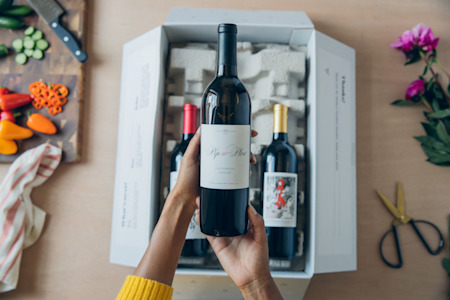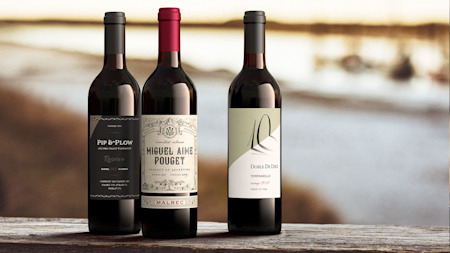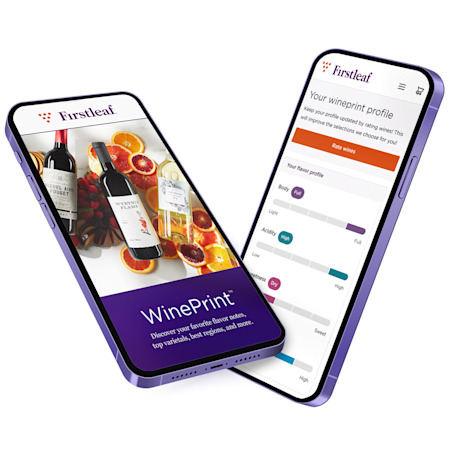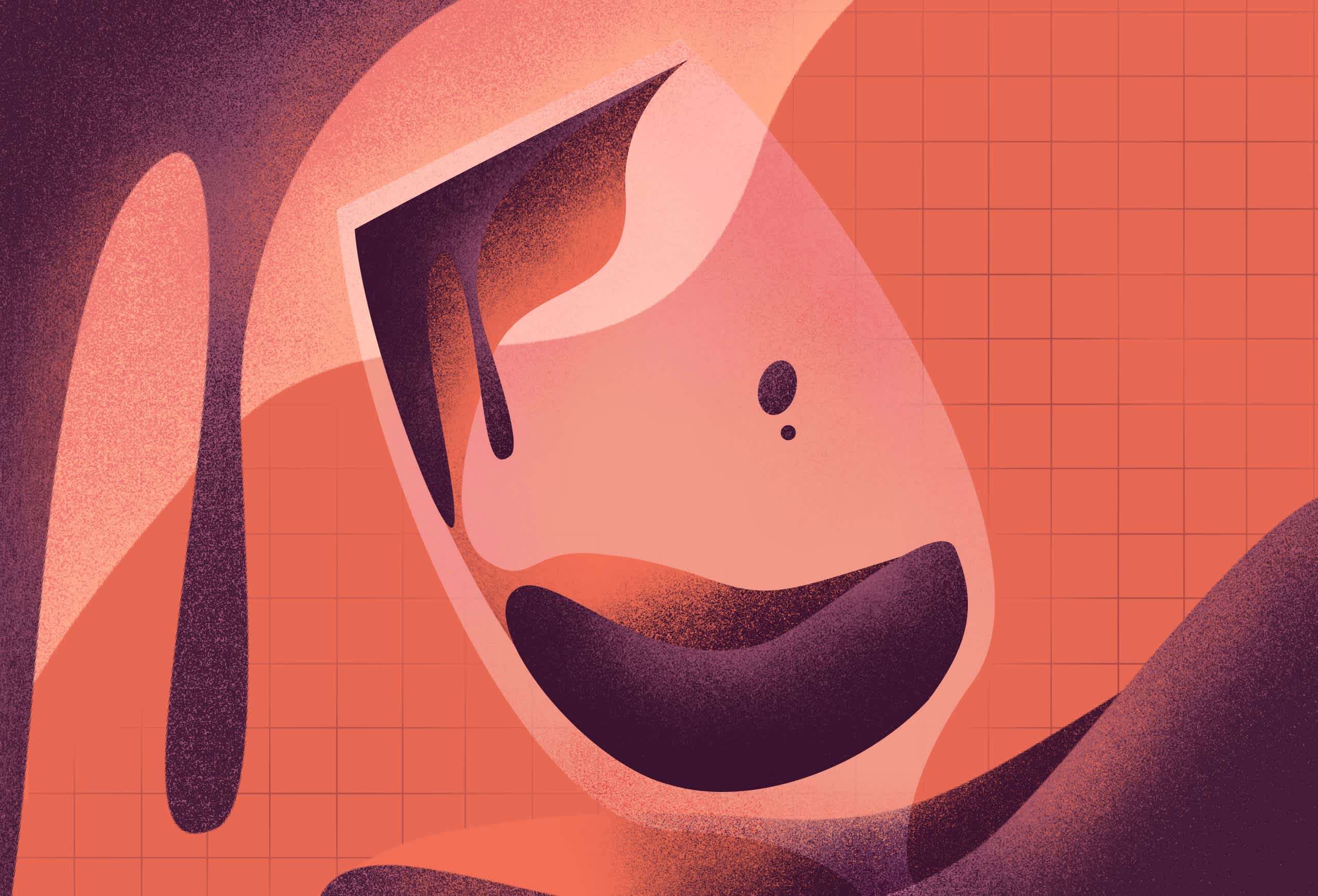What Are Wine Legs?
What wine legs can (and can't) tell you about a glass of wine
There's an adage that some wine drinkers adhere to. It's not uncommon to see a seasoned wine drinker swirl their glass, let it sit, and watch how slowly the droplets form and run down the inside of the glass.
What are they watching? The wine’s legs.
Wine legs are a complex set of interactions between alcohol, water, air, surface tension, and the insides of a wine glass. The liquids separate on a microscopic level inside due to different surface tension levels for each component. This separation creates an effect that looks like wine tears are streaking the inside of your glass of wine.

Take Our Quiz Today
Get award-winning delicious wines from all over the world shipped straight to your door. Take the quiz to get the perfect pairings for your holiday season.
Take The Quiz TodayIN THIS ARTICLE:
Are Wine Legs Good or Bad?
Wine legs or tears are not an indication of the quality of the wine. A red wine that causes wine legs in your glass is not necessarily a better wine than a white wine without wine legs in the glass. It’s actually a scientific phenomenon formally known as the Marangoni Effect.
The process that causes wine legs has been scientifically classified for over 150 years. In the 1850s James Thompson, brother of Lord Kelvin, observed the effect, but the theory wasn't popularized until the 1870s when Italian scientist Carlo Marangoni published his own scientific paper on the tears of wine. Now you know why we call it the Marangoni Effect!
That said, it's possible that human beings have known the answer to the question “What are wine legs?” for much longer. Some even claim that the Bible references the effect: "Look not thou upon the wine when it is red, when it giveth his color in the cup, when it moveth itself aright” (Proverbs 23:31).
What Causes Wine Legs?
The Marangoni Effect, or Gibbs-Marangoni Effect, is all about the way that liquid flows due to surface tension gradients. First, what is surface tension? Have you ever seen a raindrop on a leaf that stays together instead of breaking into smaller droplets? That's surface tension. Water molecules are more attracted to one another than they are to the air (or alcohol) molecules around them. This allows the water to bunch up, essentially as if a thin film surrounded the droplets. It's the same reason that droplets combine to make bigger droplets.
In wine, something a little different happens. Wine is made of mostly water and alcohol, but the alcohol has a much lower surface tension level than water. So the water and alcohol begin to separate on a microscopic level inside of a wine glass. The alcohol moves toward the sides of the wine glass, and, eventually, the alcohol will climb the inside of the glass and allow legs, tears or streaks to appear.
This effect is essentially the alcohol molecules piling together around the water molecules. As it climbs, the alcohol starts to evaporate, which increases the incidence of the Marangoni Effect. Alcohol will keep climbing, evaporating, and then falling back down the side of the glass until it is gone or the wine glass is covered. It needs exposure to evaporate. This is why you've never seen it happening on the inside of a bottle of red or white wine.
Wine Legs and Higher Alcohol Wines
This Marangoni Effect, or wine legs, is most easily observed in bottles of wine with high alcohol content. The bigger the wine streaks or wine tears in the glass, the higher the alcohol content in the wine. Not sure what alc percentage is wine or what constitutes higher alcohol wine? Higher alcohol wines are typically 12% ABV or higher. But you can also learn that by looking at the alcohol by volume content on the wine label. Legally, wine drinkers need to know how much alcohol is in a bottle of wine, and the alcohol concentration will always be listed by ABV (alcohol by volume). You should definitely look for wine legs when you open your next bottle of Cabernet Sauvignon or Zinfandel. The alcohol levels in those red wines are typically higher than, say, a lighter Pinot Noir.

Shop Award Winning Wines
Find award winning full-bodied and light-bodied wines from our wine store and have them shipped straight to your door. Shop wine by color, varietal, region, and more.
Shop Wines NowWine Legs and Sweeter Wines
Sweet wines typically have higher sugar content than less sweet or dry wines. (You can learn the difference between sweet and dry wines here.) This can cause the liquid to be denser, with a higher viscosity, resulting in higher fluid surface tension. So you may see wine legs flow more slowly down the glass of a sweeter wine. But this isn’t true of all sweet wines. Sweeter wines can be more viscous than dry wines, but the sugar content needed to be visually observed is very large. Most sweeter wines do not have the required 30 g/L of glycerol needed to show this effect.
How to Assess Wine Legs Like a Resident Wine Expert
Now that you know all about wine legs, it’s your turn to swirl your glass and assess them like the wine expert you are! Here is the easiest way to observe wine legs:
Pour yourself your favorite glass of wine
Set your wine glass on a flat surface
With your palm facing the table, hold the base of the stem between your pointer and middle fingers
Apply pressure to the base of the glass and swirl the wine with small circular motions
Examine how the wine flows in your glass
If you see a lot of legs, the wine is a higher alcohol wine
If you notice a slower flow down the glass, the wine may be sweeter
And if you ever need the help of an actual certified wine expert, our Wine Concierge team is here for you 7 days a week. They’re one of the many reasons Firstleaf is America’s most personalized wine club and wine subscription company.
IN THIS ARTICLE

WinePrint™ by Firstleaf
Are you looking to learn more about your wine preferences? Check out our Wine Print for an in-depth look at your personal tasting profile. Discover your favorite wines, varietals, regions, and tasting notes and get personalized recommendations wherever you are.
Learn More